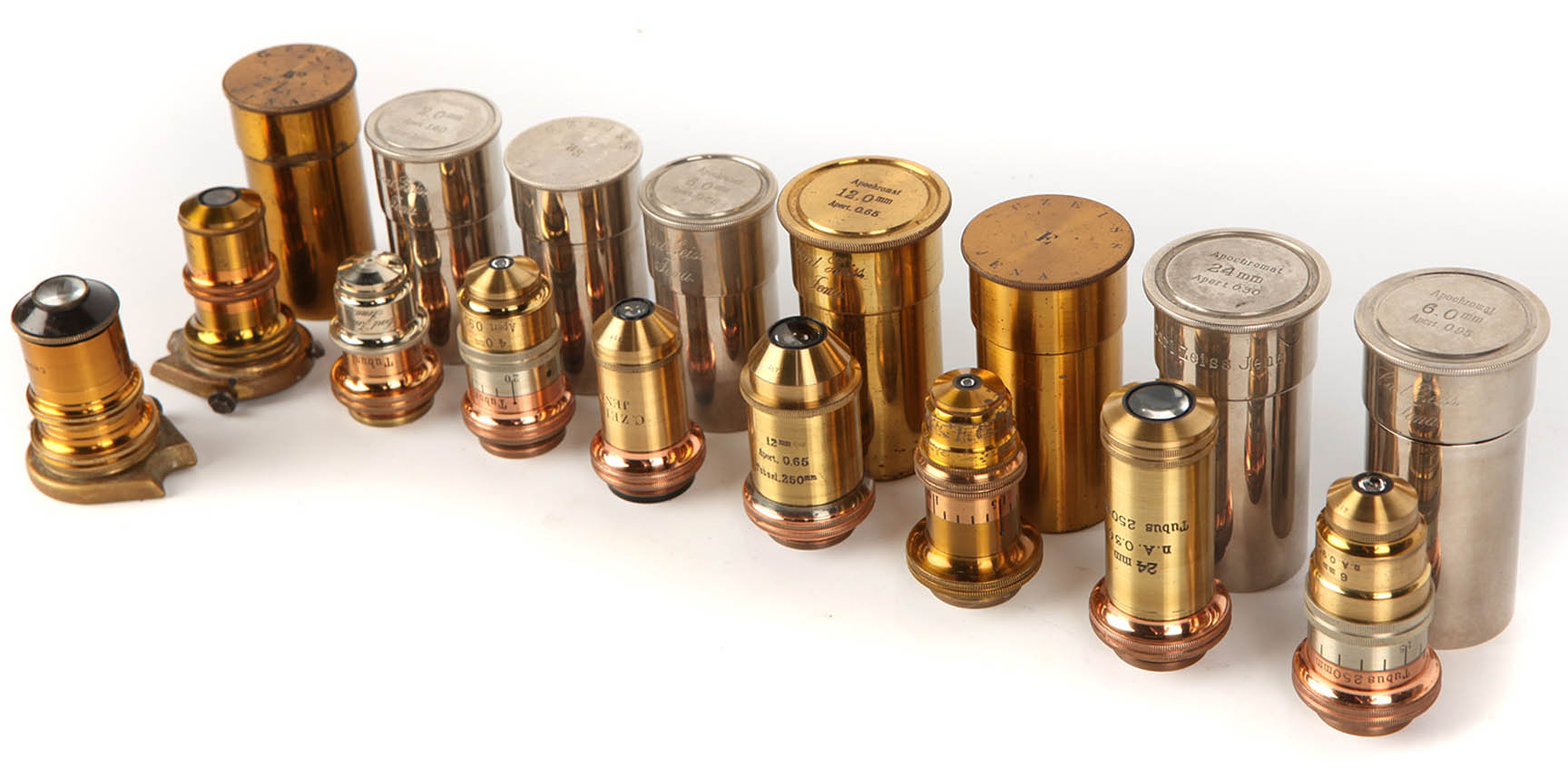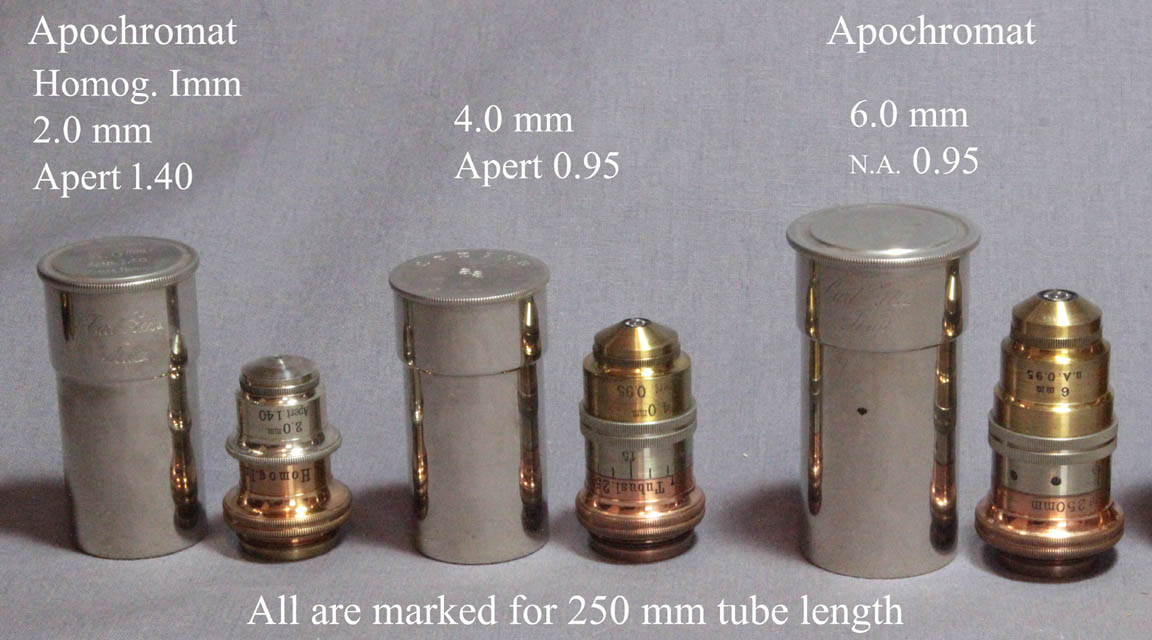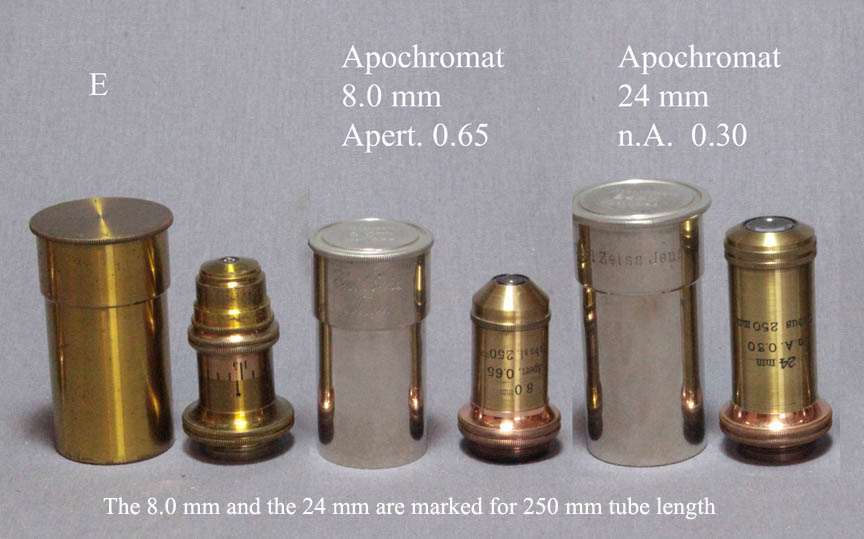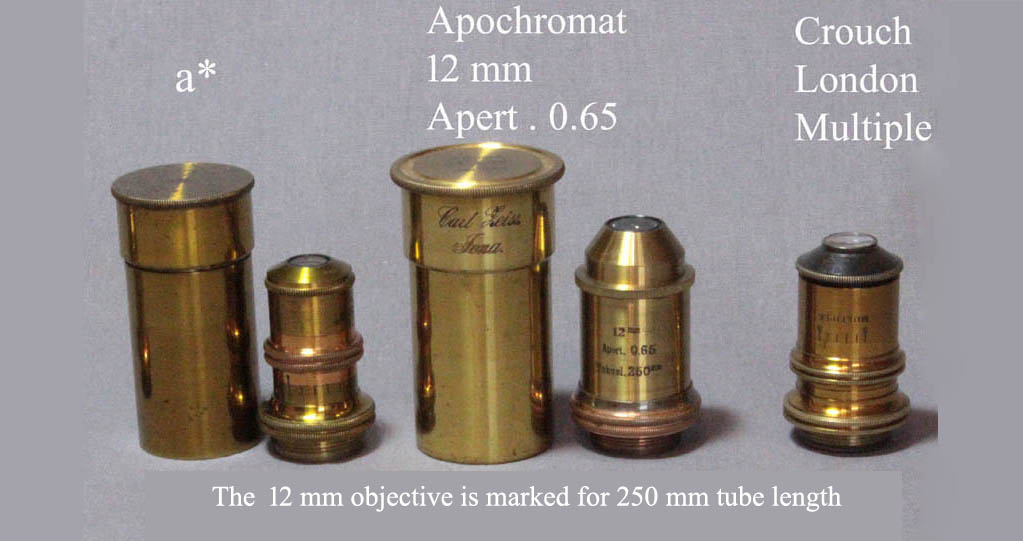COMPOUND MONOCULAR MICROSCOPE
MAKER:Charles Baker Company
MODEL:'Nelson No 1a' or Nelson-Curties No 1
c.1900
SIGNED: 'BAKER 244 HIGH HOLBORN LONDON '
PLEASE SCROLL DOWN FOR ADDITIONAL IMAGES

There are 9 objectives with the Nelson No 1 microscope. 6 of these are Apochromats and one is a Fluorite objective. All but one of the 9 objectives are by Carl Zeiss. The other by H. Crouch has no can and is only marked with the name Crouch London, and markings for multiples of magnification between 1 and 5. Most of the Zeiss objectives are marked for the English long 250 mm tube length, and all the correction collars move smoothly. Although most of these objectives are cosmetically very nice, the 12mm is not optically sound, due to clouding and crystalization of the upper lens which is a fluorite lens. The Crouch variable objective is also optically defective due to delamination of the front elements. Baker was agent for Zeiss and it was common for them to sell microscopes outfitted with Zeiss optics. All the objectives except the Crouch and the 4 mm have their original cans. The 4 mm came with a can marked for the a3 (28 mm) objective. The fluorite and apochromatic objectives must be used with compensating eyepieces, such as those included in this outfit.

The 4 mm must be an apochromat, even though not marked as such, because of its high N.A. The can with it is for an a3 rather than for the 4mm.

The 'E' objective has a focal length of 2.8 mm and a N.A. of 0.85 according to the Zeiss 1885 catalog, though these are not marked on the objective nor its can, this must be a Fluorite objective. Fluorite and Apochromatic objectives must be used with a compensating eyepiece, such as that supplied with this outfit.

The a* is a special variable magnification objective, with focal length variable from 43 to 29 mm. The Crouch objective is another variable magnification objective. The Zeiss 12 mm is optically nonfunctional due to dense crystalization of the upper element (the lens closest to where the objective attaches to the nose of the microscope).



